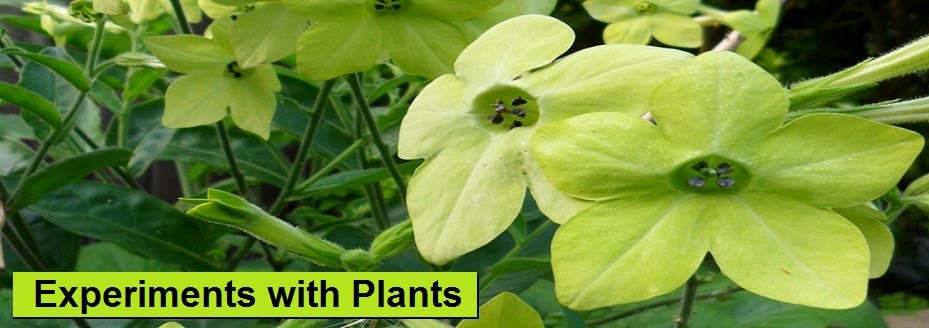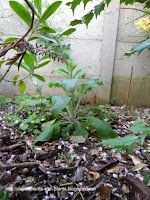I was beginning to wonder why I had accepted this invitation because I’m neither well-read nor am I intentionally going green … but then Stacy reminded me of words written about 7 months ago when I started blogging, then forgotten, about how I double-planted : half for the slugs & snails and half for myself, rather than dispense slug control pellets.
 Therefore, I'm writing this post to explore myself in search of greenness. It extends beyond the comfort zone of my garden, but I did promise I would venture outside at the beginning of the year ....
Therefore, I'm writing this post to explore myself in search of greenness. It extends beyond the comfort zone of my garden, but I did promise I would venture outside at the beginning of the year ....So why this aversion to using slug pellets? I would like to say it’s because I’m concerned about the long-lasting effects of releasing chemicals into the atmosphere or because the slug pellets may appear appetising to other creatures seeking habitats in my garden, not just the slugs.
The truth is I don’t know if slug pellets contain harmful chemicals (Mrs F informed me it is possible to get bird-friendly products) and due to my town up-bringing, I can’t even look a slug in the tentacles without releasing a shriek quietly to myself. The only answer I have is that it seems unnecessary at the moment, the slugs are not doing a great deal of damage and I have a theory that when slugs eat leaves, plants are prompted to flower prolifically for survival.My first book choice for Earth Day is "The Very Hungry Caterpillar" by Eric Carle. This is the first book I owned and now I like to buy it for small children. I think everybody knows, but in case you don’t … it’s the story of a caterpillar that eats its way through a leaf and then gorges on various foods (not usually for caterpillar consumption) before turning into a butterfly.
 It is made of thick cardboard pages including holes chewed out. As a child, I remember poking my finger through the holes and wiggling it about. It’s such a simple idea, yet the book is still on sale over forty years after it was first published.
It is made of thick cardboard pages including holes chewed out. As a child, I remember poking my finger through the holes and wiggling it about. It’s such a simple idea, yet the book is still on sale over forty years after it was first published.Psychologists claim that the human beings personality is formed by the age of two, and it sounds a bit far-fetched but I feel that subconsciously the reason why I accept slug & snail damage in my garden is partly because of this book.
I am not expecting that I’ll be so laid back forever. There may be a day when the pests in my garden are totally out of control or my plants get sick and then I’ll have a difficult decision to make, or maybe it wont be so difficult, but until that day my garden will survive without artificial pesticides or fertilisers.
 My second book choice for Earth Day is "The Ornamental Kitchen Garden" by Geoff Hamilton. He gives practical guidance on setting up, planting and tending organically, a small back garden where flowers, fruit and vegetables are all grown together resulting in a natural balance between pests and their predators. This is the type of garden I aspire to create. However, I wouldn't call myself green based on this, because in contradiction I wear cotton clothing and I've read that vast amounts of pesticides are required to grow cotton commercially.
My second book choice for Earth Day is "The Ornamental Kitchen Garden" by Geoff Hamilton. He gives practical guidance on setting up, planting and tending organically, a small back garden where flowers, fruit and vegetables are all grown together resulting in a natural balance between pests and their predators. This is the type of garden I aspire to create. However, I wouldn't call myself green based on this, because in contradiction I wear cotton clothing and I've read that vast amounts of pesticides are required to grow cotton commercially.Until I saw the accompanying TV series, with revolutionary time-lapse photography, I never thought of plants as living lives comparable to animals, with the same value. In a manner typical of his usual wildlife commentaries, he travelled around the world introducing us to plants that I had never seen or heard of, describing their life-cycles and the challenges they have to overcome to survive in their native landscapes.
I understand that native planting is believed to be important for Earth’s sustainability, to compensate for all the species that have been culled as man progresses with world domination.
 My contribution so far is ten foxgloves excelsior which, as you can see, are just coming into bud now, but apart from these, the plants in my garden are quite cosmopolitan. I do question what native actually means though, because even before homo sapiens evolved, there were changes in climate, and land masses were shifting, which would have caused plants to move around and find new homes.
My contribution so far is ten foxgloves excelsior which, as you can see, are just coming into bud now, but apart from these, the plants in my garden are quite cosmopolitan. I do question what native actually means though, because even before homo sapiens evolved, there were changes in climate, and land masses were shifting, which would have caused plants to move around and find new homes.What does Sustainability mean in the context of Earth Day?
 According to this short video … http://youtu.be/B5NiTN0chj0
According to this short video … http://youtu.be/B5NiTN0chj0 .... there are four aspects to going green, or bearing in mind Earth’s sustainability in daily life, taking care not to ...
exhaust fossil fuels – I’m guilty of driving a car to work and to buy groceries but I also use public transport because in London we are fortunate to have reliable services. My local council helps me recycle paper, plastic, tins and garden waste weekly.
exhaust fossil fuels – I’m guilty of driving a car to work and to buy groceries but I also use public transport because in London we are fortunate to have reliable services. My local council helps me recycle paper, plastic, tins and garden waste weekly.
release harmful chemicals into the atmosphere – I’m guilty of using cleaning products which contain bleaches etc. I admit that I should try harder to find some environmentally-friendly products.
distribute the world’s food resources unfairly – I have heard that large areas of the Amazonian rainforest are cut down to rear beef cattle and that there is enough land to grow food crops for everyone in the world but it is not shared equally. I used to be a vegetarian, because I didn't think it was right to eat meat that I was not prepared to slaughter myself, but I have lapsed since and now eat a small portion of fish, chicken or meat, about three times a week.
Finally, just a note about the foxglove experiments. The photos are arranged in the same order as January's post for comparison, a final set of measurements has been recorded before they flower. I'm not sure how I'm going to factor in the effects of the heatwave during the past week, I was hoping to leave them to their own devices, barely watered. Then while I was wondering how I am going to quantify flowering performance, I noticed that a couple of plants have more than one flower spike. It's going to be complicated.
Content created by b-a-g for http://experiments-with-plants.blogspot.com/2011/04/foxgloves-23-apr-2011.html

















